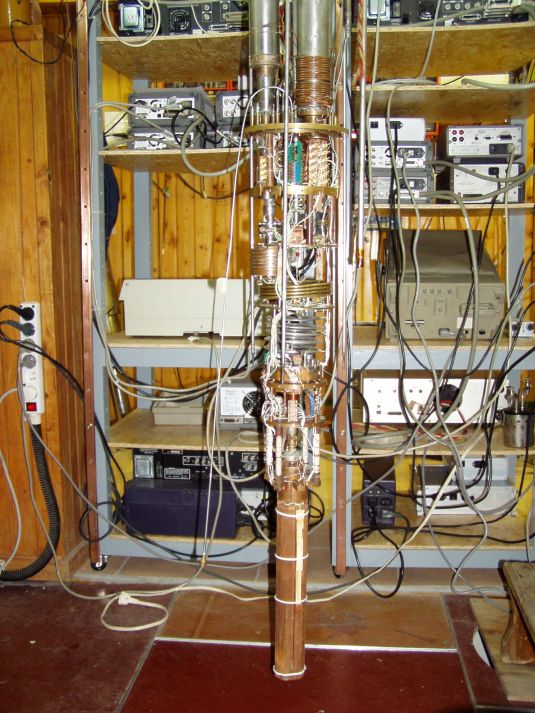The activities of the departement are concentrated on solid state physics and quantum liquids at low and very low temperatures. Since 1990 a rebuilt nuclear demagnetization apparatus with the new diffusion welded copper nuclear stage is able to cool superfluid 3He below 1 mK. The NMR technique was installed to study the magnetic properties of superfluid 3He (by homogeneously precessing domain). Special computer-controled current sources for supplying superconducting magnets used during the demagnetization process and during cw-NMR experiments were developped. The ultra low temperature group has cooperated with the people from The Kapitza Institute of Physical Problems, Moscow.
The research in solid state physics is focused on the study of the transport, thermal, magnetic and optical properties. The 3He-4He dilution refrigerator with a top loading system from Oxford Instruments enables performances down to milikelvin temperatures. Here the main interest is devoted to the rare-earth intermetallic compounds and heavy fermions (cooperation with Uni in Beyreuth). Simultaneously fast response secondary thermometers for low temperatures are developed. Several cryostats for measurements of the above mentioned properties at higher temperatures are available.
From 1983 a new solid state method – the point-contact spectroscopy is used. This method is capable of recording directly the electron-quasiparticle interaction in metals and intermetallic compounds. An interaction of the conduction electrons with phonons, magnetic excitons and paramagnons has been measured in many compounds in the lab. By this method the direct observation of Zeeman splitting of crystal-electric-field levels was done. The classical and quantum-mechanical trajectory effects have been studied in the point contacts of the semi-metals also in the high magnetic fields (cooperation with the Grenoble High Field Magnet Lab as well as with the Kharkov Institute of the Low Temp.Phys. and Engineering). At present, the tunnel spectra of the high-Tc superconductors (HTSC) are beeing studied.
Optical measurements are performed by the infrared spectrometer FT-IR 113v, Bruker working in the wave range from 10 up to 10000 cm-1 down to liqid helium temperatures. The main interest is devoted to the high-Tcsuperconductors, the quasicrystalline materials and the ferrofluids (the study of small particle aggregation in magnetic fields). In progress are also theoretical investigations of the point-contact and tunneling spectroscopy on heavy-fermion systems and HTSC, studies of excitations in the superfluid 3He. The departments He-liquifier supplies all interested laboratories in Košice.

The coldest place in Central Europe
 Contact
Contact Intranet
Intranet SK
SK






